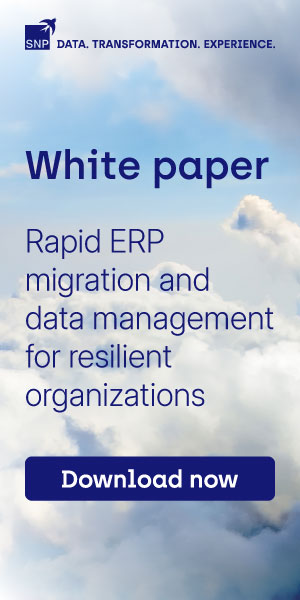Enterprise systems are essential for function, and that has only become truer in the era where digital, data-driven business is not a competitive advantage but a prerequisite for even competing. These systems are so vital that once they are implemented, many of the costs are accepted as necessary, and changing anything for the sake of savings, particularly on the infrastructure side, might be more of a headache than they are worth. That was more likely to be true in the on-premises era of enterprise technology. However, cloud infrastructures have created more of an appetite for migrating to new infrastructures in search of cost reduction.
A growing number of technology leaders are seeking “cost takeout” strategies to reevaluate the financial math of enterprise systems. While cost takeout might just sound like a synonym for cost-cutting, there is a difference. Cost-cutting is generally more aggressive and is done in the name of reducing expenditures, even when it reduces capabilities. Cost takeout, on the other hand, is more strategic in nature. It involves right-sizing, consolidating redundancies, removing waste, and improving efficiency. Many companies are finding that moving to a new infrastructure-as-a-service provider provides them with the opportunity to undergo cost takeout, reducing the overall investment in their enterprise systems without compromising functionality. Furthermore, companies are taking advantage of cost takeout to “self-fund” the next wave of business transformation with data and AI.
Maximizing cost takeout requires more than a lift-and-shift migration.
How Companies are Taking Out Costs
Cost takeout strategies can also be part of a larger effort to fix infrastructure issues. For example, one mid-market CRM and ERP vendor that hosts its offerings on cloud infrastructure was facing challenges with their provider around database management, performance, support, and licensing.
The company dealt with issues around costly manual configuration and maintenance, which also led to development delays. There was limited performance during peak periods, slower-than-expected ticketing resolution, and a challenging and complicated licensing model with administrative overheads that wouldn’t work as the company looked to grow its SaaS offerings.
To fix these issues and in an effort to reduce costs, the CRM and ERP provider migrated to Oracle Cloud Infrastructure (OCI). It began with one development environment as a three-month proof of concept, but eventually, the entire production environment was moved to OCI
The results of the infrastructure migration were encouraging—the company reports a 30% boost in productivity, a 25% improvement in cost efficiencies, and a 30% savings in costs associated with database monitoring, patching, upgrading, and management. Its CRM offering is able to scale more effectively for peak periods, and additional CPU is paid for only on a per-use basis. The licensing structure associated with OCI also removed the need to create separate agreements for additional instances, creating up to a 50% cost reduction per new license. They are also finding benefits in better support.
In another project, a global education services company with more than 100,000 student users in more than 1,000 high schools found that its cloud infrastructure was struggling to handle a growing base of users, resulting in insufficient memory and computing resources. There were multiple service outages impacting all customers, and the company’s infrastructure wasn’t meeting the demands of peak times. To solve this issue, they sought to expand capacity while also taking out infrastructure costs.
Much like the CRM and ERP provider, the educational services company underwent a proof-of-concept period and determined it would move to OCI, along with its previous infrastructure service. Through the two-day migration, the company reduced its monthly infrastructure usage costs by 30%. With a foundation that could handle peak traffic, support hours were reduced by 80%. Onboarding for new students and partners was also improved through better service availability.
Another example is a retail optimization provider migrated to OCI with an objective to give its customers the ability to reduce labor costs. The OCI migration allowed them to speed up the adoption of the company’s application, resulting in a 40% reduction of labor costs related to implementing their products.
A final example, a large IT staffing organization migrated its Customer Management System (CMS) on a MySQL database to OCI in the quest for a multi-cloud option and to combat limited resources in the ability to stay up-to-date with MySQL security releases. The staffing provider was able to build a multi-cloud environment and achieved a 75% cost reduction while experiencing better performance and scalability.
Cost takeout strategies can also be part of a larger effort to fix infrastructure issues.
Finding the Right Path to Cost Takeout
Maximizing cost takeout requires more than a lift-and-shift migration. Organizations should examine where costs can be reduced, including areas such as infrastructure spend, licensing, data transfer patterns, and administrative workloads. Any potential savings should be validated through proofs of concept before taking on larger-scale projects.
It’s not just about the savings of running a new cloud infrastructure, the cost of the migration needs to be factored into the cost takeout equation and business case. Migration costs include data transfer, testing, and cutover planning. It is important to implement governance policies, tagging strategies, and automated instance scheduling at the beginning of the project to track that costs are actually matching projections. There is external help for this analysis, such as IBM’s approach, which provides Total Cost of Ownership (TCO) analysis for OCI.
On the people side, IT and line of business teams must work together throughout the process of migrating cloud infrastructure. Cost takeout is a joint effort of IT and finance that touches contract negotiations, procurement strategy, support arrangements, and operational workflows. When managed as a joint program, the financial and operational benefits are optimized.
Spending expectations on cloud infrastructure are shifting, and companies aren’t just assuming that there are high costs associated with their critical systems that must be absorbed. Those that identify cost takeout opportunities will be better positioned to reinvest savings into innovation and growth. Cost takeout is the chance to reduce the financial profile of these enterprise systems while potentially enjoying operational benefits of a new cloud infrastructure at the same time.
What This Means for ERP Insiders
- Don’t be afraid to reexamine the costs associated with running your critical systems. While migration to new infrastructure may sound daunting, it is much more achievable in cloud deployments. Explore your options, look into different providers, and ensure you are getting the best deal and the best performance.
- If a proof of concept (POC) is required, start with areas that can be extended rather than a throw-away POC.. Companies that achieved cost takeout through a cloud infrastructure shift began by migrating a non-critical module or non-production environments as a proof-of-concept. This allowed them to measure performance, getting a better idea of costs, and set the foundation for better user adoption down the line.
- Develop a comprehensive total-cost model to evaluate if you will achieve true cost takeout in your migration. Consider not just the cost of infrastructure usage, but also the different license reuse policies, the level of support needed, the amount of downtime expected, as well as the cost of actually migrating your systems. Include lines of business in the conversation when developing the business case and consider external help for TCO analysis.






